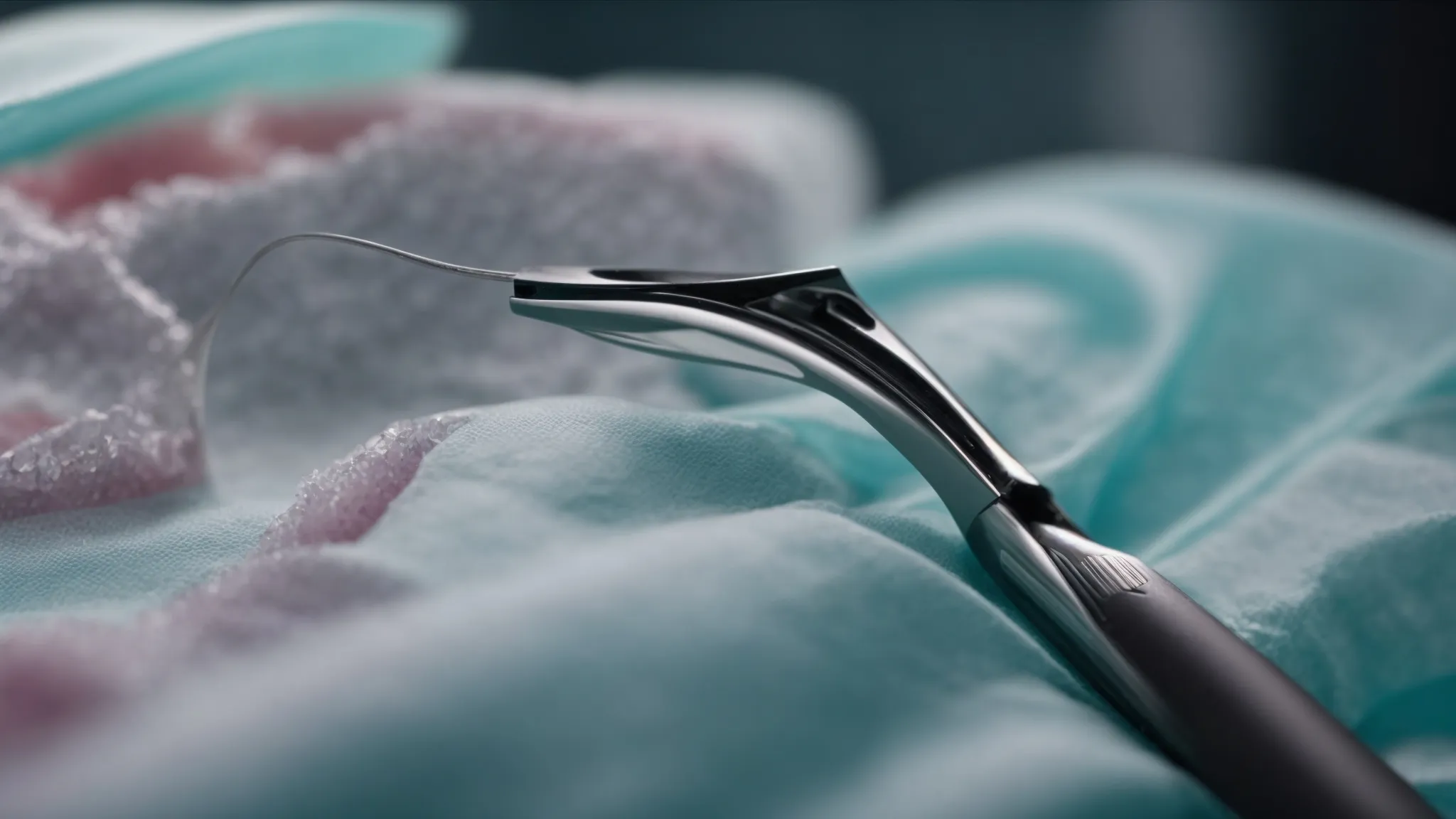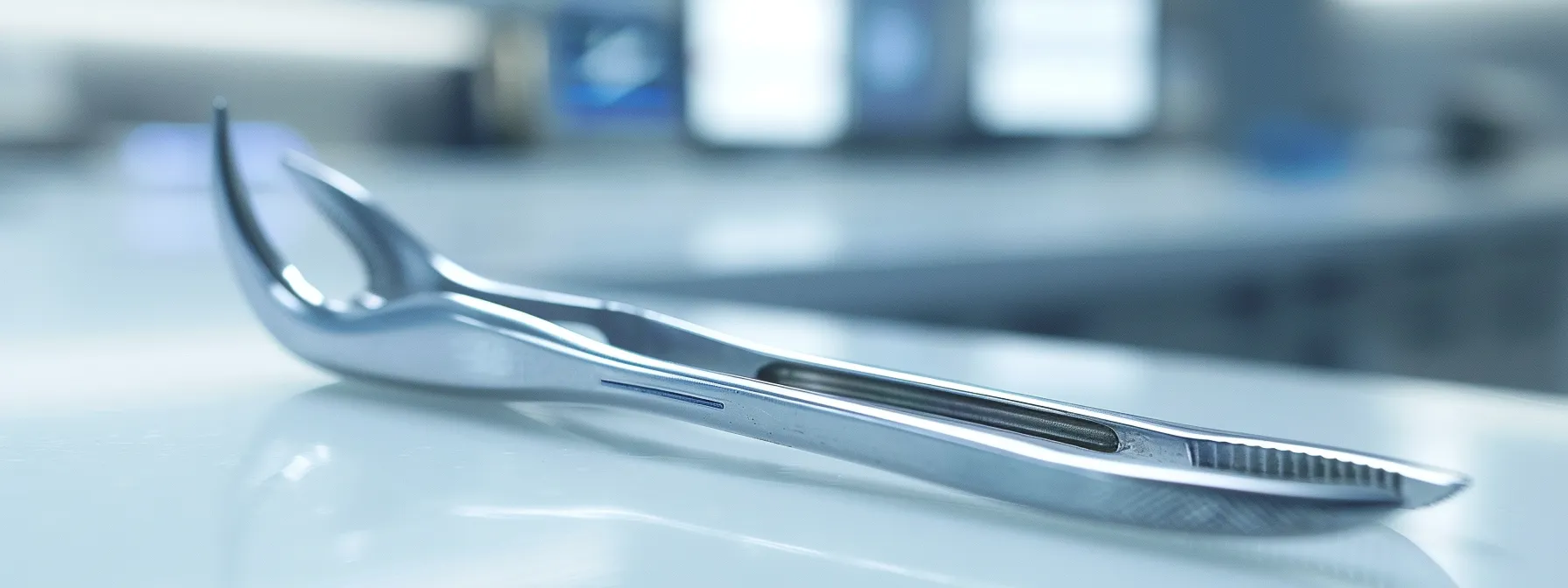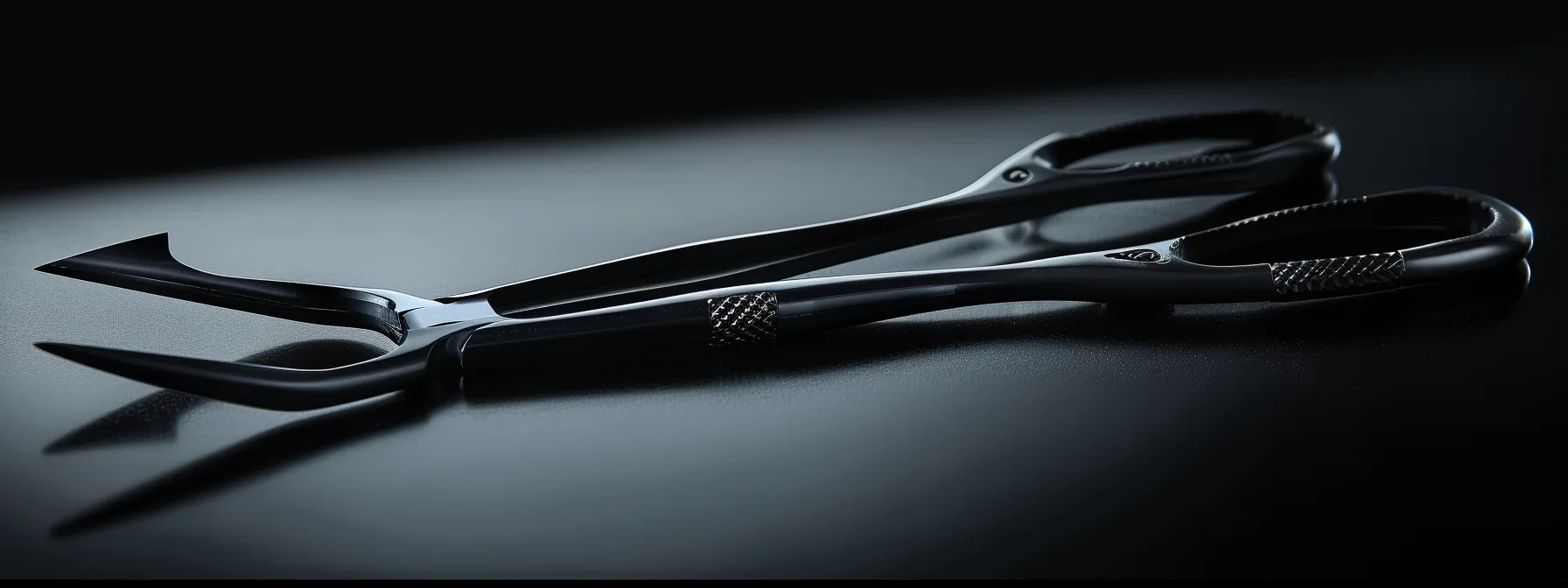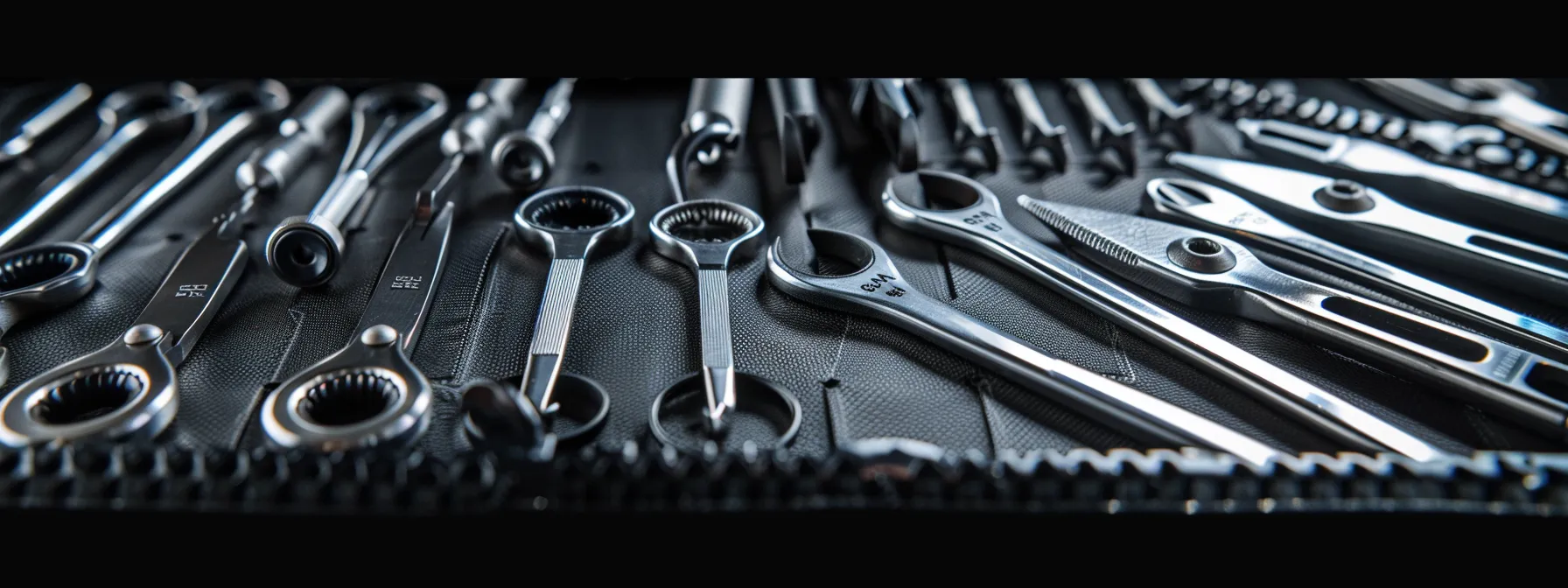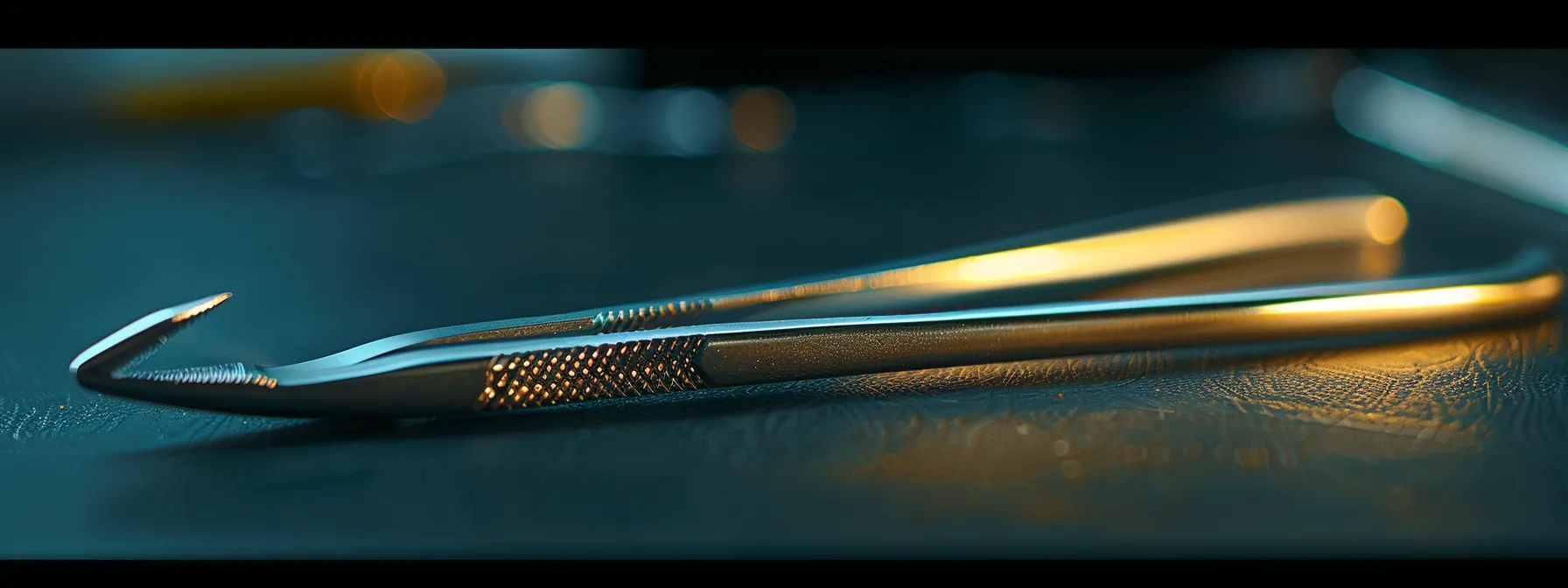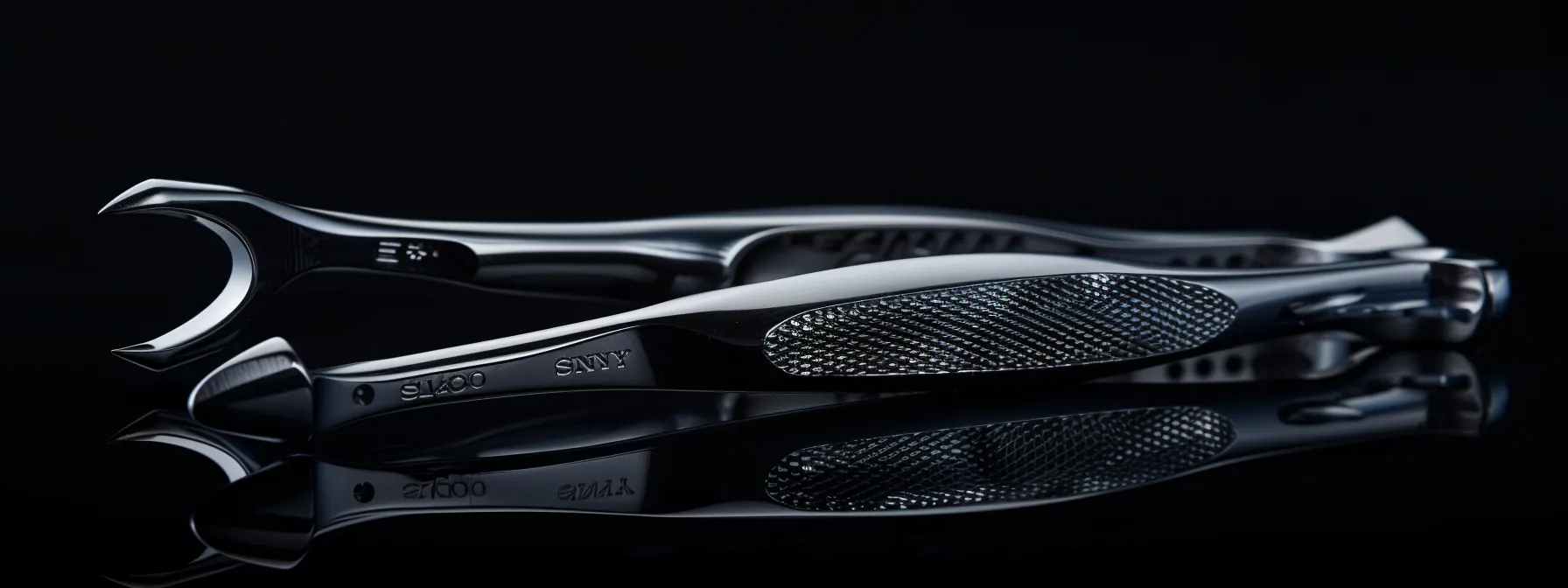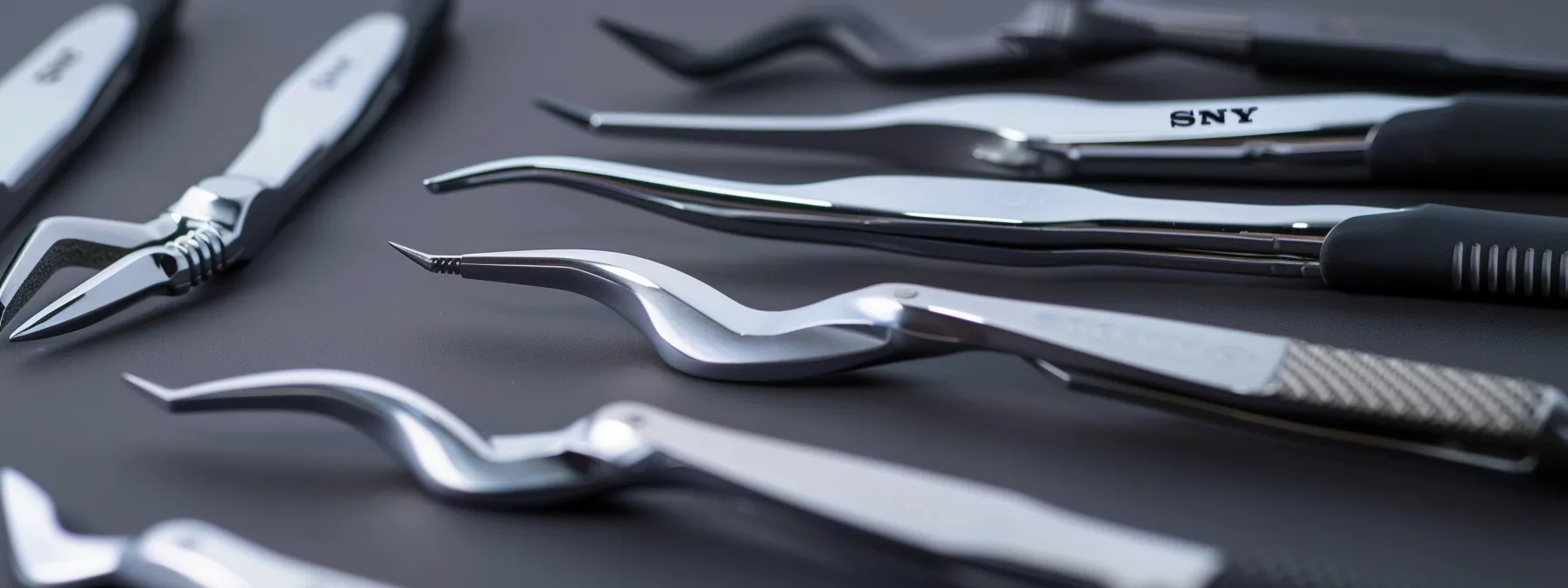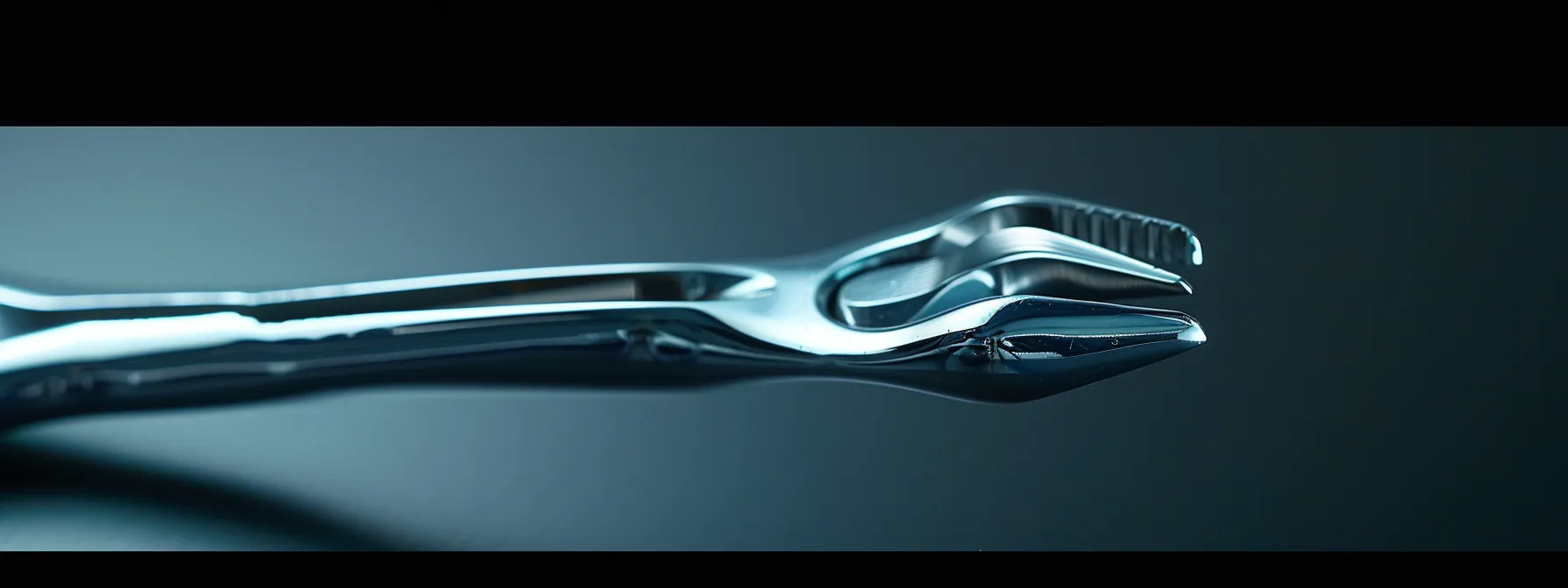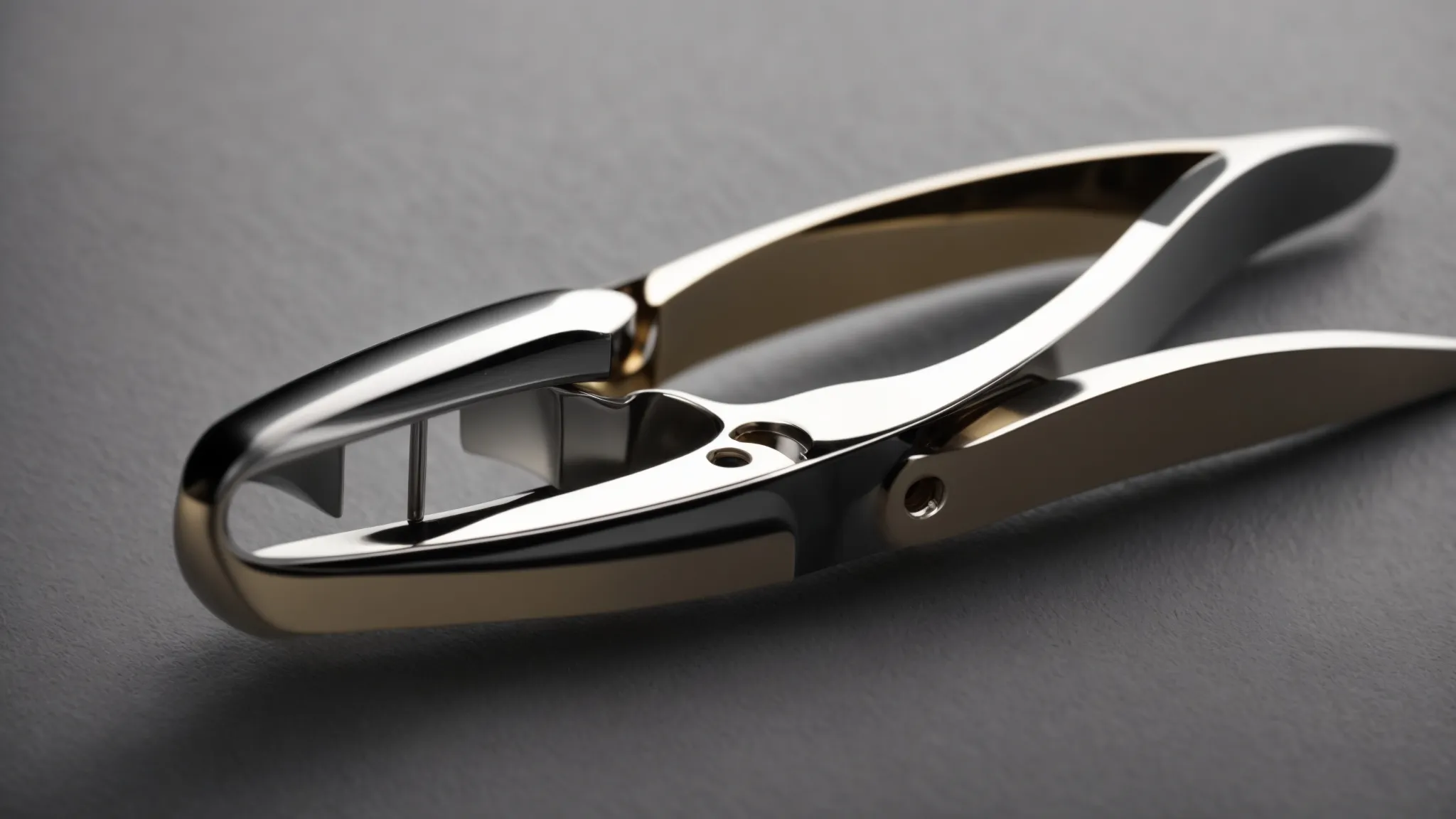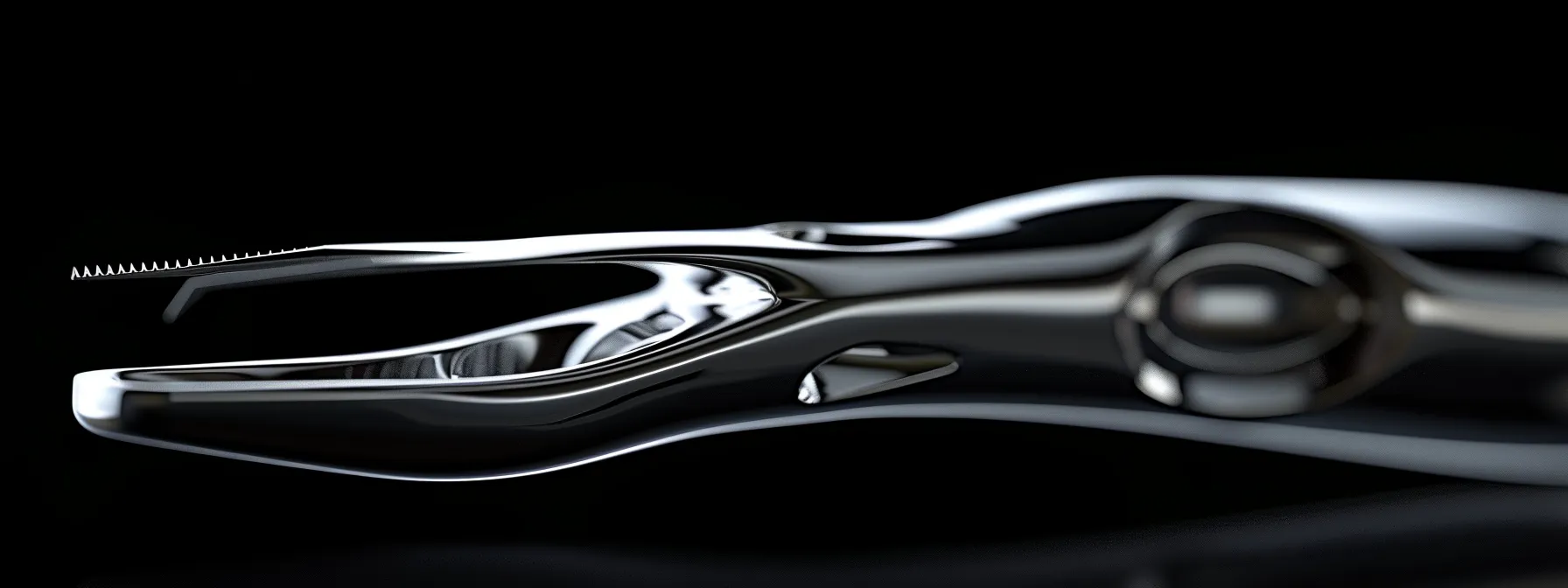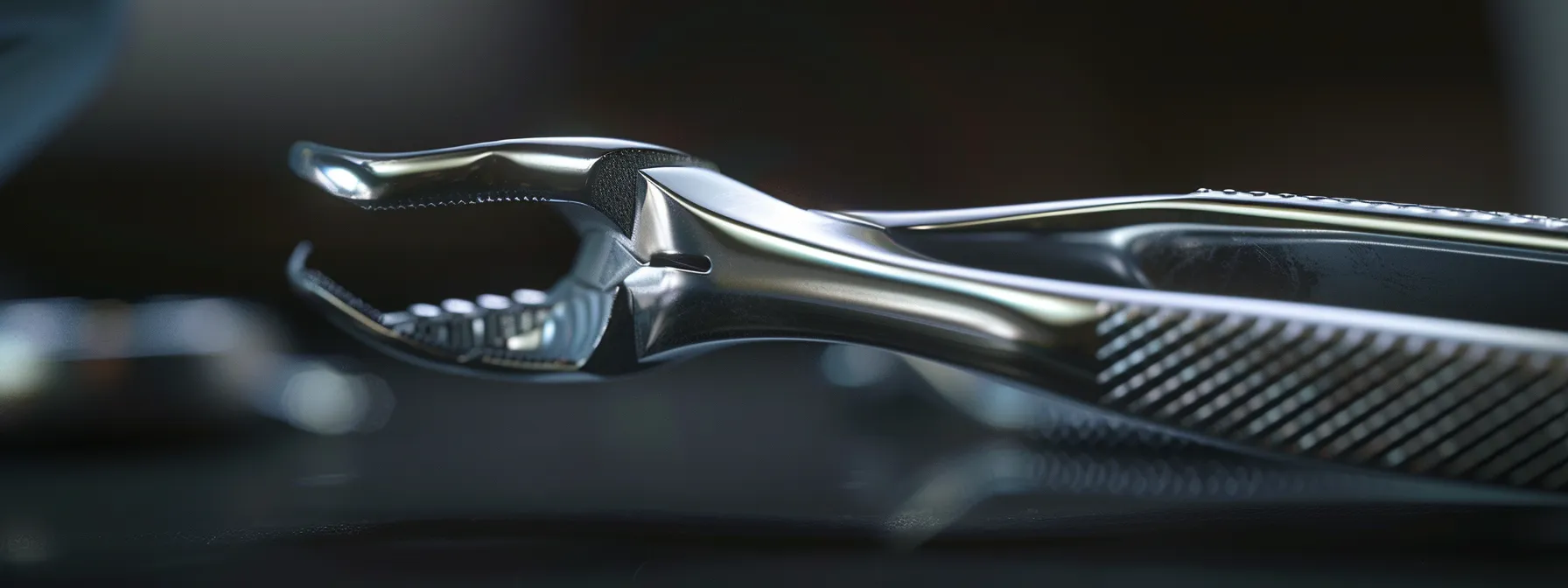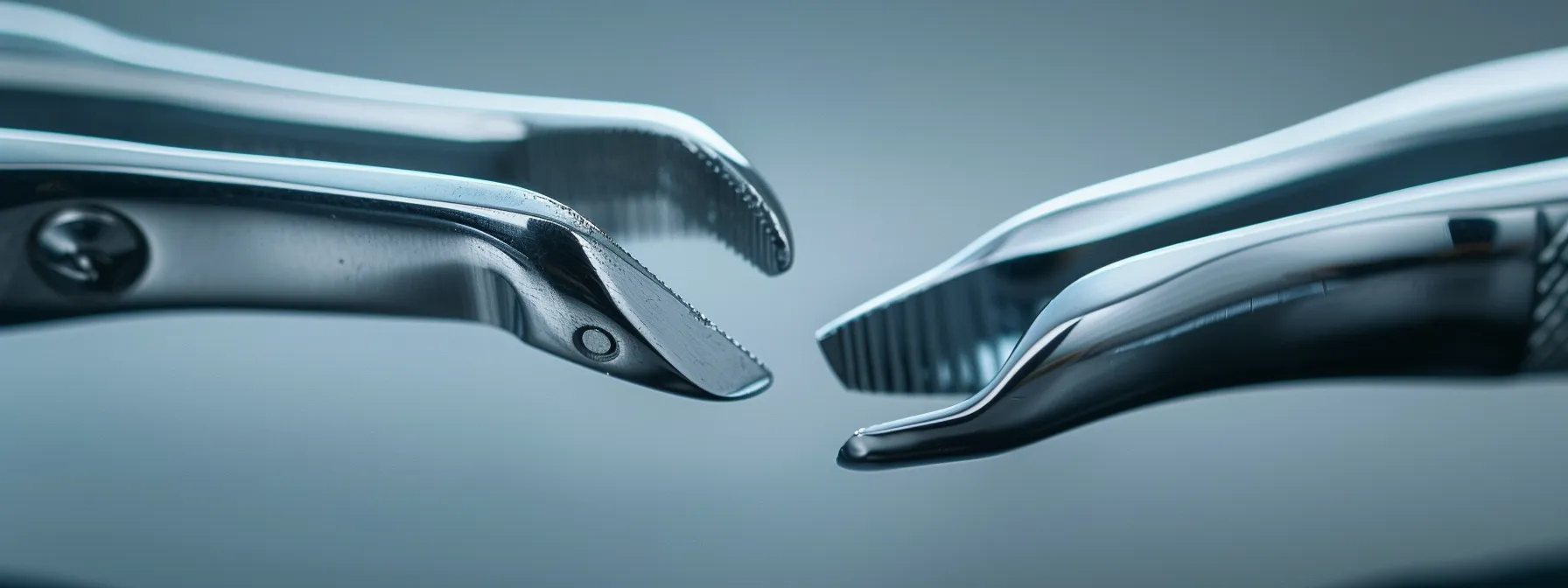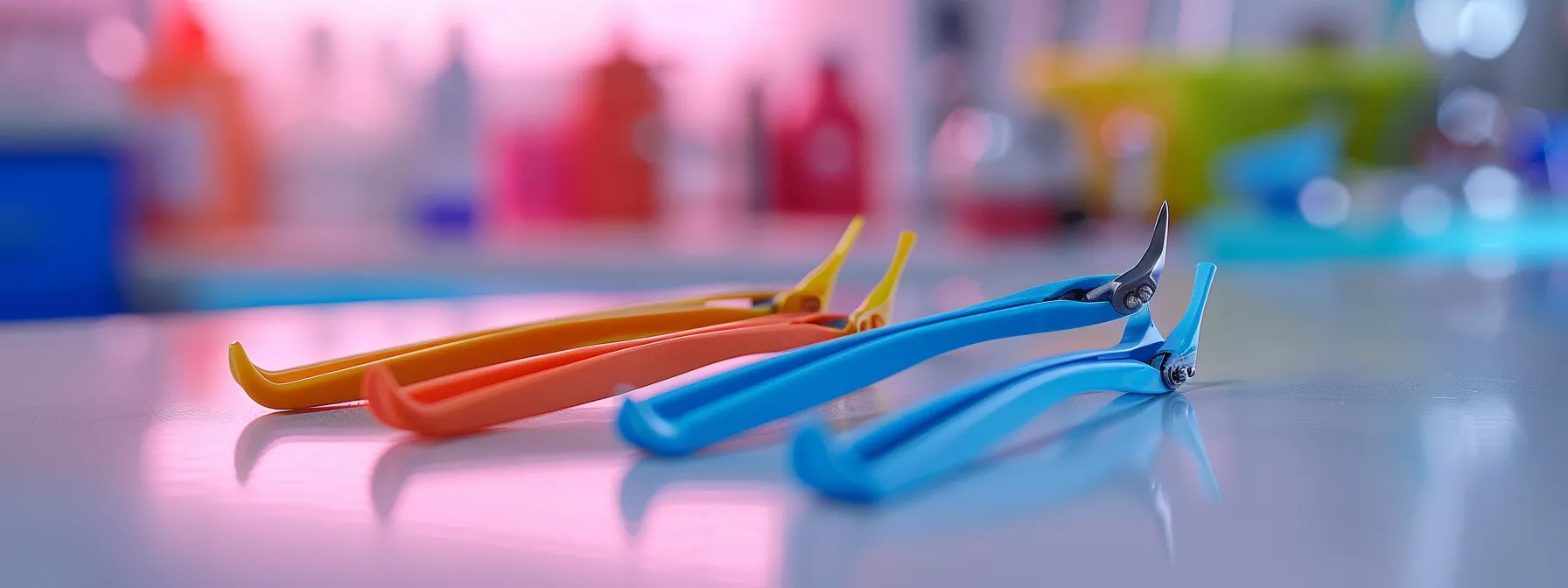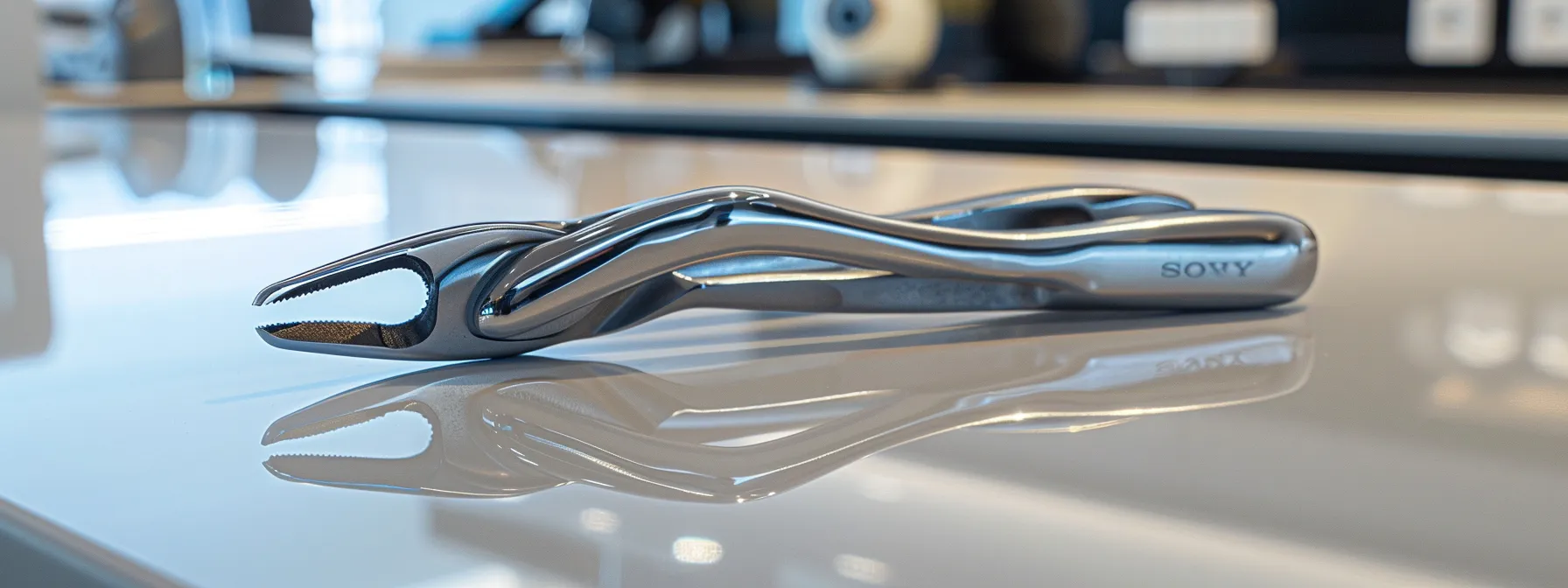Expert Tips for Picking the Right Dental Needle Holder
- Posted October 23, 2024
- by lenoxinstro
Choosing the right dental needle holder can significantly impact the efficiency of procedures like suturing and dental extraction. Many practitioners overlook crucial features such as the diameter and grip, which can affect their precision during moments that demand utmost accuracy. This guide explores the importance of selecting the appropriate needle holder, the types available, and tips for evaluating options before purchase. By addressing these key areas, dental professionals will be better equipped to enhance their practice and achieve excellent results in both general dentistry and veterinary medicine.
Key Takeaways
- Choosing the right dental needle holder is critical for surgical precision and patient safety
- Ergonomic designs and materials impact the comfort and efficiency of dental procedures
- Locking mechanisms enhance control, preventing slippage during intricate surgical tasks
- Compatibility with various sutures ensures versatility in different dental procedures
- Regular training on the proper use of needle holders improves surgical outcomes and patient experiences
Understanding the Importance of the Right Needle Holder
The choice of dental needle holder significantly impacts surgical precision, ensuring accurate placement around the molar area while contributing to patient safety during veterinary dentistry procedures. A well-designed steel needle holder enhances practitioner comfort and efficiency, allowing for better control and a secure grip using the finger. This section explores these critical aspects, emphasizing the need for a suitable adhesive to minimize complications.
How Needle Holders Affect Surgical Precision
The effectiveness of a dental needle holder directly influences surgical precision, particularly during procedures requiring anesthesia. A well-constructed holder with a firm grip ensures that dental professionals can securely manipulate the knot and tubes, facilitating accurate placement without compromising the surrounding tissues. Whether opting for titanium or plastic, the choice of material plays a crucial role in the holder’s ability to withstand repeated use while maintaining the necessary control during intricate procedures.
| Aspect | Impact on Surgical Precision |
|---|---|
| Material | Titanium holds up better with repeated use; plastic may provide flexibility. |
| Grip | A secure grip reduces slippage and enhances control during procedures. |
| Knot precision | Accurate handling of knots encourages successful suturing without tissue damage. |
| Design | Ergonomic designs improve comfort and reduce fatigue for practitioners. |
The Role in Patient Safety During Procedures
The right dental needle holder plays a critical role in ensuring patient safety during dental procedures. A sturdy metal hemostat, for instance, provides a reliable grip, reducing the risk of slippage when suturing soft tissue. This precision is essential not only for effective wound closure but also for minimizing any potential trauma to surrounding tissues, thereby enhancing overall patient safety and comfort throughout the dental experience.
Impact on Practitioner Comfort and Efficiency
The choice of a dental needle holder significantly influences practitioner comfort and efficiency during procedures. An ergonomic design reduces hand fatigue, allowing professionals to maintain precise control when handling the syringe or manipulating tissue in delicate microsurgery. Selecting a reputable brand known for quality can further enhance a veterinarian’s ability to perform complex tasks, ultimately leading to better outcomes for patients and a more streamlined workflow in the clinic.
Choosing the right needle holder is crucial, but what features truly matter? Understanding these key aspects will guide the next choice, ensuring effectiveness and ease in every stitch.
Key Features to Consider When Selecting a Needle Holder
Key Features to Consider When Selecting a Needle Holder
When choosing a dental needle holder, several key features warrant attention. Material choices play a vital role in the holder’s durability and functionality, with benefits tailored to specific uses. Selecting the appropriate size and length ensures compatibility with various sutures and healing practices. Different jaw types affect precision and effectiveness, while locking mechanisms enhance control during procedures. Lastly, ease of sterilization and maintenance requirements contribute significantly to the overall efficiency and compliance with medical policies.
Material Choices and Their Benefits
When selecting a dental needle holder, material choices significantly affect its performance and longevity. Stainless steel stands out as a popular option due to its durability and resistance to infection, making it ideal for procedures involving sutures around the premolar area. The length and design of the holder should align with the specific needs of dental professionals, ensuring they can maneuver effectively without compromising the patient‘s safety.
| Material | Benefits |
|---|---|
| Stainless Steel | Durable, resistant to infection, ideal for repeated use. |
| Titanium | Lightweight, strong, hypoallergenic properties. |
| Plastic | Flexible, suitable for single-use applications. |
Selecting the Appropriate Size and Length
When selecting a dental needle holder, ensuring the appropriate size and length is crucial for effective surgical procedures. A well-sized needle holder enhances control during suturing, particularly when working with delicate tissues or guiding a scalpel in implant placements. Proper dimensions not only improve accuracy but also facilitate effective sterilization practices, guaranteeing patient safety and compliance with medical standards.
Different Jaw Types and Their Uses
Different jaw types in dental needle holders serve specific surgical needs, impacting both precision and safety. For instance, holders designed for incisor regions generally have finer jaws to reduce the risk of damaging surrounding tissues during delicate procedures such as bone grafting. In contrast, broader jaws may be preferred for larger sutures or areas where more grip is necessary, providing a stable platform for the surgeon to work effectively, particularly when using acid to sterilize surgical areas.
| Jaw Type | Use Case | Advantages |
|---|---|---|
| Fine Jaws | Ideal for incisor procedures | Reduced tissue damage risk |
| Broad Jaws | Suitable for larger sutures | Enhanced grip and stability |
| Curved Jaws | Facilitates access to difficult areas | Improved maneuverability |
The Significance of Locking Mechanisms
The significance of locking mechanisms in dental needle holders cannot be overstated, particularly during procedures such as a sinus lift. A reliable locking feature ensures that the jaws of the holder remain securely closed when gripping sutures, providing enhanced control and precision. Options made with tungsten carbide offer superior strength and durability, effectively preventing slippage, which is crucial when using pliers for delicate tasks. Additionally, the ease of sterilization with disinfectant is simplified when the mechanism is easy to operate, allowing practitioners to maintain strict hygiene standards throughout their procedures.
Ease of Sterilization and Maintenance Requirements
Ease of sterilization and maintenance is a crucial factor when selecting a dental needle holder, particularly in a surgical environment. Holders designed for compatibility with autoclave sterilization streamline the process, ensuring that dental professionals can maintain rigorous hygiene standards. Additionally, opting for materials that resist corrosion simplifies cleanup, allowing for quick disinfection between procedures so that practitioners can focus on their work rather than worry about contamination from gloves or hand tools.
With the key features in mind, it’s time to look at the different types of dental needle holders. Each type has its own strengths, and understanding these can make all the difference in practice. dental needle holders
Exploring Various Types of Dental Needle Holders
This section provides an overview of the various types of dental needle holders used in practice. It starts with the Mayo-Hegar needle holders, known for their versatility, followed by the advantages of Mathieu needle holders, which offer a reliable grip for suturing. Next, it discusses when to use Castroviejo needle holders, ideal for delicate procedures, along with the features of Crile-Wood needle holders that enhance surgical precision. Finally, it examines specialized needle holders for micro-dentistry, highlighting their unique designs and manufacturing processes that cater to specific angles and injection techniques in nursing-related tasks.
Overview of Mayo-Hegar Needle Holders
Mayo-Hegar needle holders are widely recognized in dental and surgical practices for their versatility and reliability. Designed for use in various fields such as orthopedic surgery and plastic surgery, these needle holders feature a lock mechanism that provides a secure grip, essential for suturing without disrupting delicate tissues. Their efficiency in managing bleeding and ensuring accurate needle control around critical areas of the mouth makes them a preferred choice among many dental professionals, streamlining procedures while enhancing patient safety. Mayo-Hegar needle holders
Advantages of Mathieu Needle Holders
Mathieu needle holders are highly regarded surgical instruments, particularly for their design that enhances precision during procedures involving surgical sutures. Their unique locking mechanism allows for a secure grip on sutures, which is essential when addressing injuries in the tooth area where delicate handling is necessary. Dental professionals find that the use of Mathieu forceps can significantly reduce the risk of tissue trauma, making surgeries faster and safer for patients.
When to Use Castroviejo Needle Holders
Castroviejo needle holders are particularly beneficial during delicate procedures, such as those encountered in general surgery, where precise hemostasis is critical. Their design allows for meticulous handling of sutures, making them ideal for securing gauze or stitching in tight or restricted areas. Dental professionals commonly utilize these needle holders to enhance control and stability, ensuring successful outcomes in intricate surgical tasks:
Castroviejo needle holders are particularly beneficial during delicate procedures, such as those encountered in general surgery, where precise hemostasis is critical. Their design allows for meticulous handling of sutures, making them ideal for securing gauze or stitching in tight or restricted areas. Dental professionals commonly utilize these needle holders to enhance control and stability, ensuring successful outcomes in intricate surgical tasks:
- Designed for delicate surgical procedures.
- Facilitates precise hemostasis.
- Ideal for securing gauze during stitches.
Features of Crile-Wood Needle Holders
Crile-Wood needle holders are designed with a unique locking mechanism that provides a reliable grip, crucial for maintaining control during intricate dental procedures. Their serrated jaws enhance precision, ensuring that dental professionals can securely manipulate sutures without risking damage to surrounding tissues. Ideal for tasks requiring consistent pressure, these holders contribute to effective suturing, improving surgical outcomes and overall patient safety within a practice.
Specialized Needle Holders for Micro-Dentistry
Specialized needle holders for micro-dentistry are designed to meet the unique challenges presented during intricate procedures involving small tissues and delicate sutures. These instruments offer enhanced maneuverability and precision, enabling dental professionals to conduct sensitive tasks with confidence. By selecting the appropriate micro-dentistry needle holder, practitioners can improve their efficiency and maintain control in challenging intraoral environments, ultimately ensuring better patient outcomes.
Different dental procedures require different tools. Understanding how to pair needle holders with specific tasks can make all the difference in delivering effective care.
Matching Needle Holders to Specific Dental Procedures
Selecting the right dental needle holder is crucial for specific procedures in dentistry. This section will cover ideal choices for various suturing techniques, the best options for periodontal surgery, selecting needle holders for implantology, appropriate tools for endodontic procedures, and considerations for pediatric dental practices. Each topic emphasizes practical insights to enhance surgical precision and patient safety. Castro Viejo needle holder
Ideal Choices for Suturing Techniques
Selecting the right dental needle holder is vital for effective suturing techniques in various procedures. For fine suturing around delicate areas, such as the gingival tissue, a Mayo-Hegar needle holder is recommended due to its stability and secure grip, allowing for intricate manipulations without causing tissue trauma. Conversely, when dealing with thicker sutures in more robust tissues, a Crile-Wood needle holder may offer the needed strength and precision to maintain control during the suturing process: needle holder
- Mayo-Hegar needle holder for fine suturing around gingival tissue.
- Crile-Wood needle holder for stronger sutures in robust tissues.
- Mathieu needle holder for secure gripping and reduced tissue trauma.
Best Options for Periodontal Surgery
For periodontal surgery, choosing the right dental needle holder is essential for achieving optimal outcomes. The Mayo-Hegar needle holder is often favored due to its ability to provide a secure grip on sutures, which is vital when suturing gingival tissues. Additionally, Mathieu needle holders can enhance precision during delicate procedures, reducing the risk of tissue trauma and improving patient comfort during recovery.
Selecting Needle Holders for Implantology
When selecting needle holders for implantology, practitioners must prioritize precision and control. A Mayo-Hegar needle holder is often recommended due to its secure grip, facilitating the accurate placement of sutures around dental implants. Furthermore, the ergonomic design of high-quality needle holders can alleviate hand fatigue, allowing dental professionals to maintain focus on complex procedures, ultimately improving patient outcomes.
Appropriate Tools for Endodontic Procedures
For endodontic procedures, selecting the right dental needle holder is paramount to ensure precision and control during root canal treatments. A Mayo-Hegar needle holder is often preferred due to its firm grip, allowing practitioners to handle delicate sutures with confidence, especially in narrow canal spaces. Furthermore, using a holder with a locking mechanism enhances stability, minimizing the risk of slippage while suturing, thus improving overall outcomes and patient safety in these intricate procedures.
Considerations for Pediatric Dental Practices
When selecting a dental needle holder for pediatric practices, it is essential to consider the specific needs of younger patients. A holder that is lightweight and easy to maneuver can significantly enhance control during delicate procedures, reducing the risk of discomfort for children. Additionally, choosing needle holders with smaller jaws can facilitate precise access to tight spaces within a child’s mouth, improving the overall effectiveness of treatments while ensuring a positive experience for both the practitioner and the patient. needle holder
Now that the connection between needle holders and dental procedures is clear, it’s time to consider what to look for when making a purchase. Understanding these tips will ensure that each choice leads to better outcomes in practice.
Tips for Evaluating Needle Holders Before Purchase
Tips for Evaluating Needle Holders Before Purchase
Assessing the right dental needle holder requires careful consideration of several factors to ensure optimal performance in practice. Evaluating balance and grip comfort can enhance control during procedures, while testing the secure hold on needles confirms reliability. Compatibility with common sutures used is essential for seamless integration. Gathering feedback from dental peers provides valuable insights, and understanding warranty and support options ensures long-term satisfaction with the purchase.
Assessing Balance and Grip Comfort
When selecting a dental needle holder, assessing balance and grip comfort is critical for enhancing surgical efficiency. A holder that feels well-balanced in the hand reduces fatigue during lengthy procedures and allows practitioners to maintain focused control. Testing the grip for comfort is essential; options with textured surfaces or ergonomic shapes can provide a secure hold, minimizing the risk of slippage while suturing.
- Evaluate the balance to ensure it feels comfortable during use.
- Check for ergonomic designs that prevent hand fatigue.
- Look for textured grips that enhance control and minimize slippage.
Testing the Secure Hold on Needles
Testing the secure hold on needles is essential when evaluating dental needle holders. Practitioners should perform a grip test to ensure the needle holder maintains a firm and reliable grasp on different needle sizes. This can minimize the risk of slippage during procedures, particularly in sensitive areas, thereby enhancing surgical precision and patient safety.
| Test Aspect | Importance |
|---|---|
| Grip Test | Ensures reliability and reduces slippage during procedures. |
| Needle Size Compatibility | Confirms holder’s effectiveness with various needle sizes. |
| Sensitivity to Tension | Adequate response to grip tension enhances control. |
Compatibility With Common Sutures Used
Compatibility with common sutures used is a crucial factor when selecting a dental needle holder. Practitioners should ensure that the needle holder can accommodate a range of suture sizes and types, allowing for versatility during various procedures. A holder that effectively grips the most frequently used sutures helps enhance surgical efficiency and precision, ultimately improving patient outcomes and reducing frustrations during delicate tasks.
Gathering Feedback From Dental Peers
Gathering feedback from dental peers is an invaluable step when selecting the ideal dental needle holder for a practice. Engaging with colleagues can provide practitioners with firsthand insights about the performance and reliability of various needle holders. By discussing experiences and preferences, dental professionals can make informed decisions that enhance surgical precision and improve overall workflow, ensuring that their chosen instruments align with their specific procedural needs.
Understanding Warranty and Support Options
Before purchasing a dental needle holder, understanding warranty and support options is essential for ensuring long-term satisfaction. A robust warranty not only protects the investment but also signifies the manufacturer’s confidence in their product’s quality and durability. Additionally, having access to responsive support allows practitioners to address any operational issues quickly, minimizing downtime and maintaining efficiency in their practice.
Having considered the essential features of needle holders, the next step is clear. It is time to navigate the path to making a smart purchase decision that aligns with your needs.
Making an Informed Purchase Decision
Balancing cost with quality and durability is essential when selecting a dental needle holder. Practitioners must also focus on choosing reliable suppliers or manufacturers to ensure instrument dependability. Additionally, implementing training for proper use and keeping up with technological advancements can enhance surgical efficiency. Integrating new tools into practice seamlessly further contributes to improved patient outcomes.
Balancing Cost With Quality and Durability
When choosing a dental needle holder, striking the right balance between cost, quality, and durability is essential for sustaining efficient practice operations. While lower-priced options may seem attractive, investing in high-quality holders crafted from durable materials—such as stainless steel or titanium—ensures longevity and reliability, reducing the frequency of replacements. Practitioners should consider their specific procedural needs and long-term investment returns, as higher quality typically translates into improved performance and enhanced patient outcomes over time, ultimately making it a sound decision for their dental practice.
Choosing Reliable Suppliers or Manufacturers
Choosing reliable suppliers or manufacturers for dental needle holders is essential for ensuring quality and durability in practice. Practitioners should seek suppliers with a proven track record in the dental industry, known for their commitment to high standards and customer satisfaction. Engaging with reputable manufacturers can provide access to quality products, excellent support, and essential guidance in selecting the right tools for surgical precision.
- Look for suppliers with industry experience and positive customer reviews.
- Prioritize manufacturers who offer warranties on their products.
- Consider suppliers that provide excellent customer support for any inquiries or issues.
Implementing Training for Proper Use
Implementing training for the proper use of dental needle holders is essential for maximizing performance and maintaining patient safety. By offering hands-on workshops and simulations, dental practices can enhance the proficiency of their staff in handling these instruments, ensuring a secure grip and effective manipulation during procedures. Regular training sessions not only boost confidence among practitioners but also reduce the risk of complications, ultimately leading to improved surgical outcomes and a positive patient experience.
Keeping Up With Technological Advancements
Staying updated with technological advancements in dental needle holders is essential for practitioners to enhance their surgical precision and efficiency. Innovative designs, such as improved locking mechanisms and ergonomic grips, can significantly affect the handling of delicate sutures and reduce hand fatigue during procedures. Engaging with current trends and new releases allows dental professionals to adopt tools that not only improve performance but also align with modern practices for better patient outcomes.
Integrating New Tools Into Your Practice Seamlessly
Integrating new dental needle holders into practice requires careful planning and training to ensure a smooth transition. Practitioners should conduct demonstrations and hands-on sessions to familiarize their teams with the features and benefits of the new tools. By addressing any concerns and prompting discussions about preferred techniques, dental practices can enhance team confidence and ensure optimal use of their new dental needle holders, ultimately leading to improved surgical outcomes and patient satisfaction.
Conclusion
Choosing the right dental needle holder is crucial for enhancing surgical precision and ensuring patient safety during dental procedures. Factors such as material, design, and jaw type play significant roles in improving practitioner comfort and efficiency. By evaluating features like locking mechanisms, sterilization ease, and compatibility with common sutures, dental professionals can make informed decisions that elevate their practice. Emphasizing quality over cost and seeking reliable suppliers will ultimately lead to better patient outcomes and a streamlined workflow in dental care.





